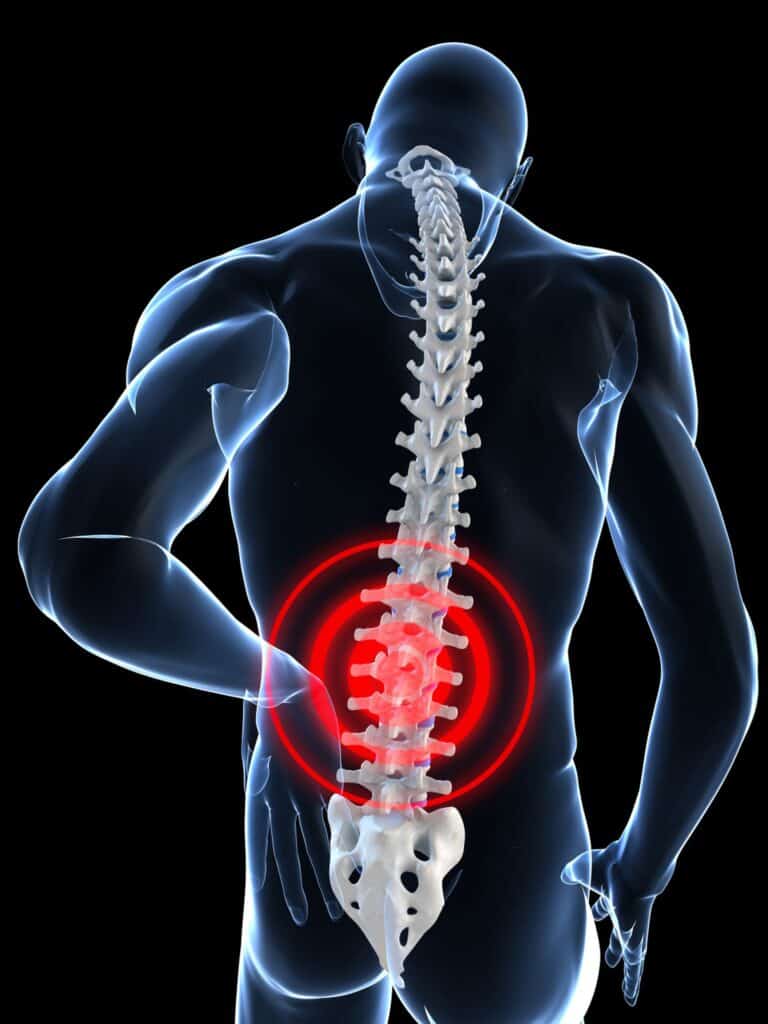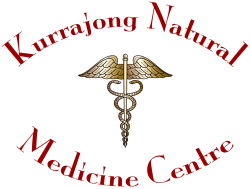Non-specific Low Back Pain (NSLBP): A Chinese Medicine Perspective
What is Non-specific Low Back Pain?
This is the most common type of back pain. About 19 in 20 cases of acute (sudden onset) low back pain are classed as ‘non-specific’. This is the type of back pain that most people will have at some point in their life.
It is called ‘non-specific’ because it is usually not clear what is actually causing the pain. In other words, there is no specific problem or disease that can be identified as to the cause of the pain. The severity of the pain can vary from mild to severe and may radiate to the lower limb.
The pain of NSLBP is in the area between the lower border of the rib-cage and the lower border of the buttocks.
What Causes Non-specific Low Back Pain (NSLBP)?
NSLBP means that the pain is not due to any specific or underlying disease that can be found. It is thought that in some cases the cause may be a sprain (an over-stretch) of a ligament or muscle.
In other cases the cause may be a minor problem with the disc between two vertebrae, or a minor problem with a small ‘facet’ joint between two vertebrae. There may be other minor problems in the structures and tissues of the lower back that result in pain.

It is not possible to identify these causes of the pain by tests. Therefore, it is usually impossible for a doctor to say exactly where the pain is coming from, or exactly what is causing the pain. To some people, not knowing the exact cause of the pain is unsettling. However, looked at another way, many people find it reassuring to know that the diagnosis is non-specific back pain which means there is no serious problem or disease of the back or spine.
How Does Traditional Chinese Medicine (TCM) view Non-specific Low Back Pain?
In TCM any disorder is viewed holistically. That is, the body is viewed as an integrated whole. A TCM doctor will look for imbalances in the body to identify a pattern of disharmony.
Chinese medicine theory tells us that the Kidney’s rule the lower back, the Liver nourishes tendons and ligaments and the Spleen governs the health of muscles. Thus low back pain is frequently a result of disharmony between these organs and their associated acupuncture channels.
The three most common TCM pathologies of non-specific low back pain (NSLBP) are retention of Cold and Dampness, Stagnation of Qi (the body’s bio-electricity) and Blood from sprain, and Kidney (Qi) deficiency.
In Chinese medicine, NSLBP is typically understood as a manifestation of an imbalance or blockage in the flow of Qi (vital energy) and blood within the channel system. According to this perspective, there can be various underlying causes for low back pain, and the treatment approach focuses on restoring the balance and harmony in the body.
Some key concepts and treatment strategies from a Chinese medicine perspective on NSLBP:
Qi and Blood Stagnation: The stagnation of Qi and blood circulation is often considered a primary factor in low back pain. It can be caused by factors such as poor posture, sedentary lifestyle, lack of exercise, trauma, or emotional stress. The goal of treatment is to invigorate the flow of Qi and blood to relieve pain.
Kidney Deficiency: The Kidney system in Chinese medicine is associated with the health of the bones, joints, and lower back. Kidney deficiency, which can result from factors like aging, overexertion, chronic illness, or excessive sexual activity, is believed to weaken the lower back, making it more susceptible to pain. Tonifying and nourishing the Kidney system is a common approach in treating back pain.
Channel Imbalances: Chinese medicine recognizes specific meridians or energy pathways that traverse the back and influence its health. Imbalances or blockages in these meridians, such as the Bladder or Gallbladder meridians, can contribute to low back pain. Acupuncture and herbal medicine are often used to stimulate and balance the flow of energy in the affected meridians.
Dampness and Cold: Chinese medicine also considers environmental factors such as cold and dampness to play a role in low back pain. Exposure to cold or damp environments, sitting on cold surfaces, or consuming excessive cold and raw foods can weaken the back and lead to pain. Warming therapies, such as moxibustion (the burning of dried mugwort herb near the skin), may be used to expel cold and dampness from the body.
Individualised Treatment: Chinese medicine recognizes that each person’s condition is unique, and treatment is tailored to the individual. Practitioners consider factors such as the patient’s overall health, constitution, and specific symptoms to determine the most appropriate treatment approach. This may involve a combination of acupuncture, herbal medicine, dietary adjustments, exercise, and lifestyle recommendations.
It’s important to note that while Chinese medicine has been used for centuries to address low back pain, its effectiveness may vary from person to person. If you’re experiencing low back pain, it is advisable to consult with a qualified and experienced Chinese medicine practitioner who can provide a proper diagnosis and personalized treatment plan based on your specific condition.
At Kurrajong Natural Medicine Centre we identify the specific TCM pathology responsible for the pain and use Acupuncture, Chinese herbs, Massage and/or Exercise therapy to reestablish harmonious function between the affected organs and acupuncture channels.
What You Can Do to Help Yourself
There are several things that may help to relieve NSLBP including:
- Rest, but not total bed rest. Move about but do not strain the back
- Hot packs placed on the painful area will promote blood flow to the area and may lessen the pain. If the pain is particularly strong or application of heat irritates or increases the pain, use a cold pack instead. It will help to reduce inflammation, swelling and pain in this circumstance
- Seek professional help from a healthcare professional if you are unable to relieve the pain using the methods described above.
- Download “Self-Help Guide to Reduce Back Pain and Increase Your Enjoyment of Life” HERE
Complementary Therapies:
-
- Acupuncture: Acupuncture is a traditional Chinese medicine practice that involves inserting thin needles into specific points on the body. It is believed to stimulate the flow of energy and promote the body’s natural healing response. Acupuncture has shown promise in relieving lower back pain and improving physical function.
-
- Chiropractic care: Chiropractic treatment focuses on the musculoskeletal system, particularly the spine, and aims to improve alignment and restore proper functioning. Chiropractors use manual adjustment techniques to address joint dysfunctions that may contribute to lower back pain. They may also incorporate other therapies such as soft tissue manipulation, stretching exercises, and lifestyle recommendations.
-
- Massage therapy: Massage therapy involves applying pressure and manipulating soft tissues to promote relaxation, improve circulation, and relieve muscle tension. It can help reduce lower back pain by loosening tight muscles and increasing flexibility. Different massage techniques, such as Swedish massage, deep tissue massage, or trigger point therapy, may be used depending on individual needs.
-
- Yoga and Tai Chi: These mind-body practices combine gentle movements, stretching, and breathing exercises. They can improve strength, flexibility, and balance, which are important for supporting the lower back. Both yoga and Tai Chi have been found to be effective in reducing lower back pain and improving function.
-
- Mindfulness-based stress reduction (MBSR): MBSR is a meditation-based program that helps individuals develop greater awareness of their thoughts, emotions, and bodily sensations. By cultivating mindfulness, individuals may better manage stress and reduce the impact of chronic pain, including lower back pain.
-
- Herbal remedies: Some herbal remedies, such as topical creams or ointments containing ingredients like menthol, arnica, or capsaicin, are used for localized pain relief. However, it’s important to consult with a healthcare professional or qualified herbalist before using any herbal remedies to ensure their safety and effectiveness.
- Heat and cold therapy: Applying heat or cold to the affected area can help alleviate pain and reduce inflammation. Hot packs, heating pads, warm baths, or hot water bottles can relax muscles and improve blood flow, while cold packs or ice packs can numb the area and reduce swelling.
- Herbal remedies: Some herbal remedies, such as topical creams or ointments containing ingredients like menthol, arnica, or capsaicin, are used for localized pain relief. However, it’s important to consult with a healthcare professional or qualified herbalist before using any herbal remedies to ensure their safety and effectiveness.
Additional strategies that may provide relief include:
- Maintain good posture: Practice proper posture while sitting, standing, and walking. Avoid slouching or hunching forward, as it can strain the lower back. Use ergonomic chairs and supportive cushions if needed.
- Exercise and stretch: Engage in regular physical activity to strengthen the muscles that support your back. Low-impact exercises like walking, swimming, or yoga can be beneficial. Additionally, stretching exercises targeting the lower back, hamstrings, and hip muscles can help alleviate tension.
- Apply heat or cold therapy: Depending on the nature of your pain, you can experiment with applying heat or cold packs to the affected area. Heat therapy (such as a warm towel or heating pad) can help relax muscles and improve blood circulation, while cold therapy (such as an ice pack wrapped in a towel) can help reduce inflammation and numb pain.
- Practice relaxation techniques: Stress and tension can contribute to back pain. Engaging in relaxation techniques like deep breathing, meditation, or mindfulness can help alleviate stress and promote overall well-being, potentially reducing back pain.
- Maintain a healthy weight: Excess weight can strain the lower back. Maintaining a healthy weight through a balanced diet and regular exercise can reduce the stress on your back and potentially alleviate pain.
- Practice proper lifting techniques: When lifting heavy objects, use your legs instead of your back to minimize strain. Bend your knees, keep the object close to your body, and avoid twisting or jerking movements.
- Improve sleep posture: Make sure your mattress and pillows provide adequate support for your back. Sleeping on your side with a pillow between your knees or on your back with a pillow under your knees can help maintain spinal alignment.
- Avoid prolonged sitting or standing: If your daily routine involves long periods of sitting or standing, take frequent breaks to stretch and move around. Alternate between sitting and standing if possible.
At Kurrajong Natural Medicine Centre we are ready to help. Simply call (02) 4573 0784 to discuss what approach is best for your issue.
References
Lam M, Galvin R, Curry P. Effectiveness of acupuncture for nonspecific chronic low back pain: a systematic review and meta-analysis. Spine (Phila Pa 1976). 2013 Nov 15;38(24):2124-38.)
Disclaimer
Disclaimer information for users of the Kurrajong Natural Medicine Centre website.
Page last updated: 24th June 2021
THE INFORMATION PROVIDED IN ANY OF THE ARTICLES PUBLISHED ON THIS SITE IS FOR EDUCATION AND INFORMATION PURPOSES ONLY.
NO CLAIMS ARE MADE AS TO THE EFFECTIVENESS OF ANY OF THE TREATMENTS USING ACUPUNCTURE OR THAT THIS THERAPY IS SUITABLE FOR THE READER.
THE SOURCES OF ALL THE ARTICLES ARE LISTED AND COME FROM REPUTABLE PEER-REVIEWED SCIENTIFIC JOURNALS. WHERE POSSIBLE LINKS TO THE ORIGINAL SOURCE ARE PROVIDED FOR THE READER TO FOLLOW.
Articles published on this page are not intended to provide diagnosis, treatment or medical advice. Content provided on this page is for informational purposes only. Please consult with a physician or other healthcare professional regarding any medical or health related diagnosis or treatment options. Information on this page should not be considered as a substitute for advice from a healthcare professional. The claims made about specific products throughout this article are not approved to diagnose, treat, cure or prevent disease.
Information provided for education and research information only
The information on this website is presented by Kurrajong Natural Medicine Centre for the purpose of disseminating health information free of charge for the benefit of the public.
While Kurrajong Natural Medicine Centre has exercised due care in ensuring the accuracy of the material contained on this website, the information on the site is made available on the basis that Kurrajong Natural Medicine Centre is not providing professional advice on a particular matter.
This website is not a substitute for independent professional advice. Nothing contained in this site is intended to be used as medical advice and it is not intended to be used to diagnose, treat, cure or prevent any disease, nor should it be used for therapeutic purposes or as a substitute for your own health professional’s advice.
Kurrajong Natural Medicine Centre does not accept any liability for any injury, loss or damage incurred by use of or reliance on the information provided on this website.
Quality of information
Kurrajong Natural Medicine Centre makes every effort to ensure the quality of the information available on this website and updates the information regularly. Before relying on the information on this site, however, users should carefully evaluate its accuracy, currency, completeness and relevance for their purposes, and should obtain any appropriate professional advice relevant to their particular circumstances. Kurrajong Natural Medicine Centre cannot guarantee and assumes no legal liability or responsibility for the accuracy, currency, completeness or interpretation of the information.
The material may include the views or recommendations of third parties and does not necessarily reflect the views of Kurrajong Natural Medicine Centre or indicate a commitment to a particular course of action.
Links to other websites
This website contains links to other websites which are external to Kurrajong Natural Medicine Centre. Kurrajong Natural Medicine Centre takes reasonable care in selecting linking websites but Kurrajong Natural Medicine Centre accepts no responsibility for material contained in a website that is linked to this site. It is the responsibility of the user to make their own decisions about the accuracy, currency, reliability and correctness of information contained in linked external websites.
Links to external websites are provided for the user’s convenience and do not constitute an endorsement or a recommendation of any third party products or services offered by virtue of any information, material or content linked from or to this site. Users of links provided by this site are responsible for being aware of which organisation is hosting the site they visit.
Views or recommendations provided in linked sites may include the views or recommendations of third parties and do not necessarily reflect those of Kurrajong Natural Medicine Centre or indicate a commitment to a particular course of action. .



